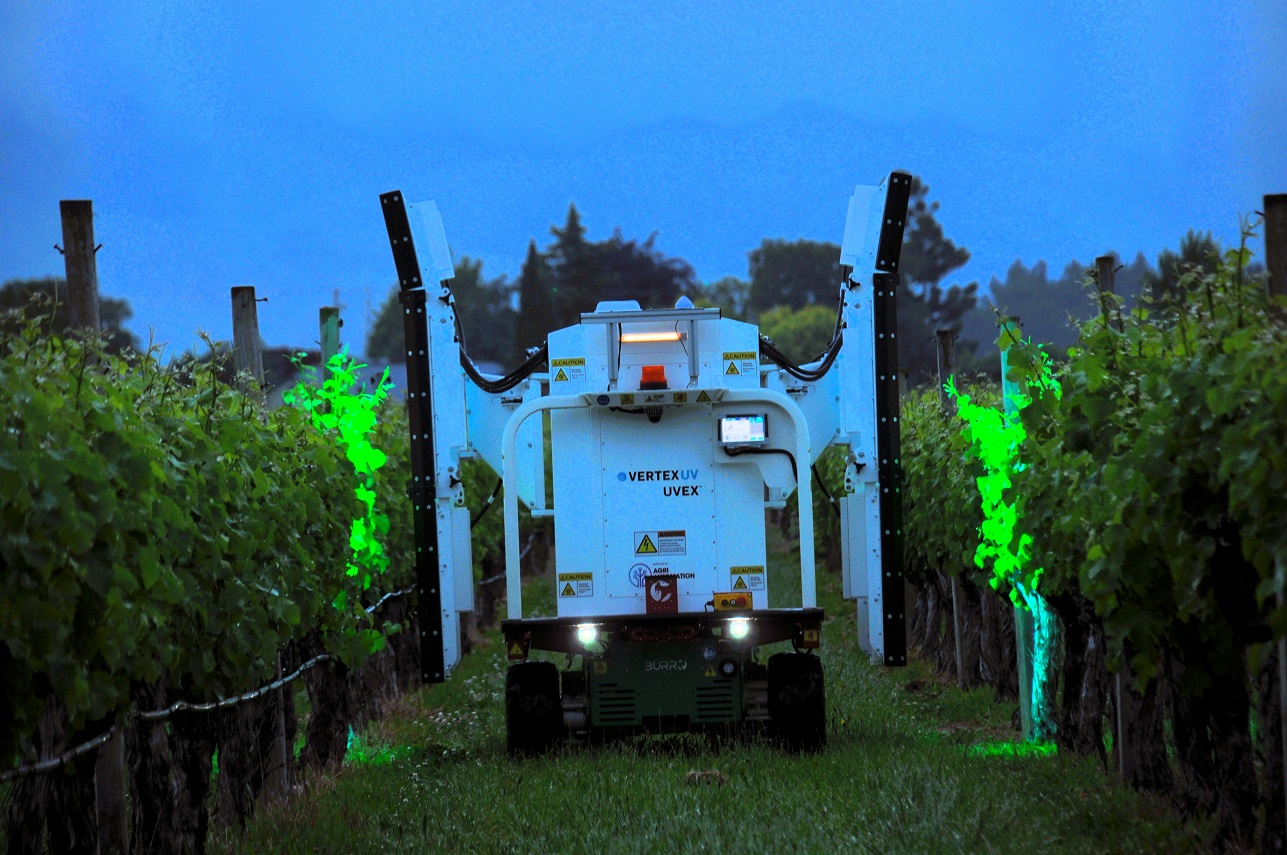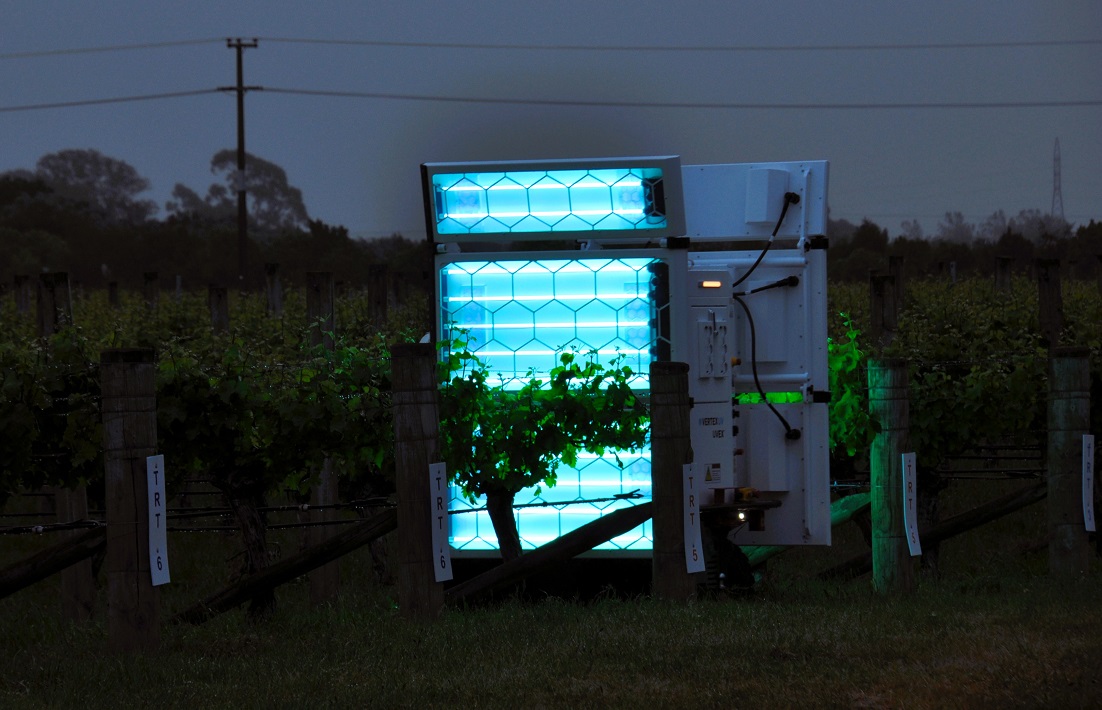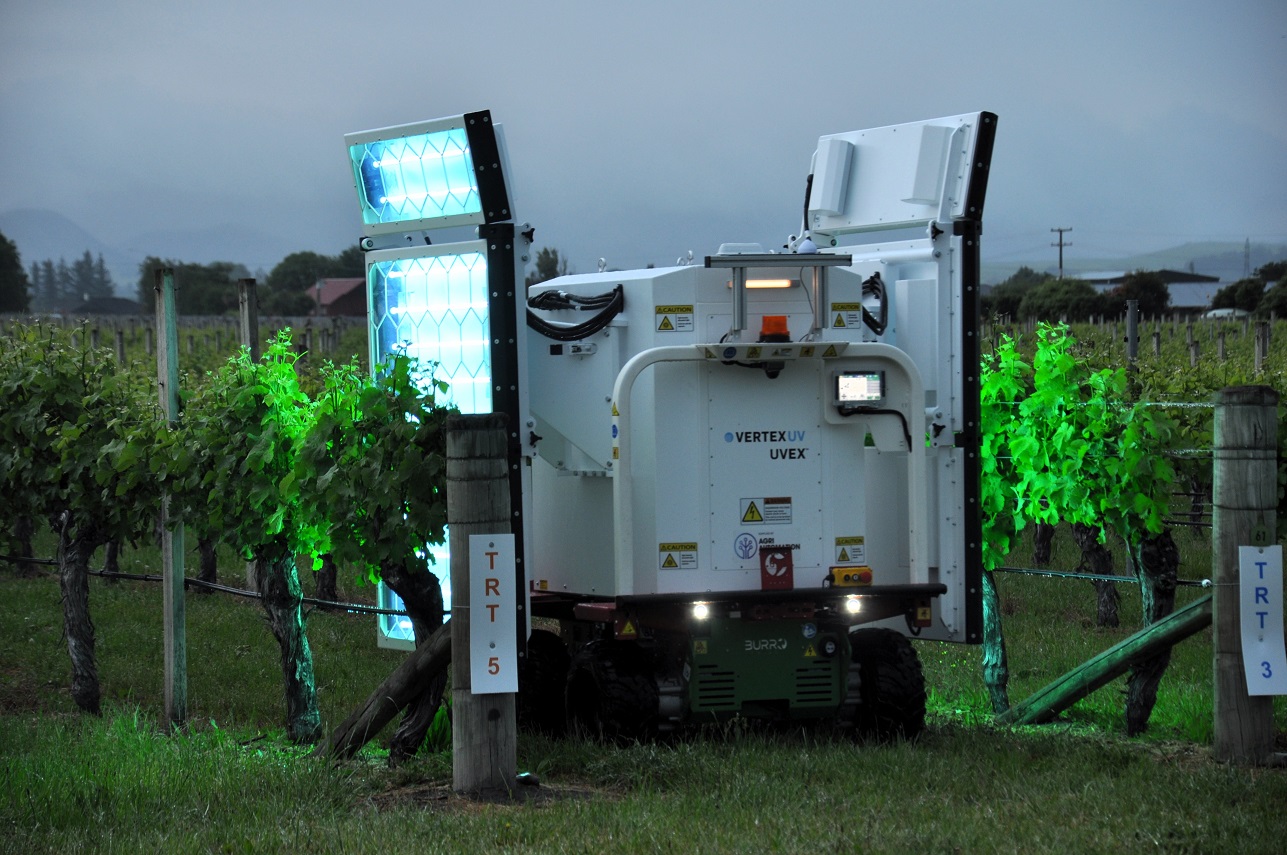Robots and a form of ultraviolet light are being trialled in viticulture and summerfruit this summer, with the aim of reducing dependency on agrichemicals for disease control.
Two newly approved projects will see A Lighter Touch partner with Bragato Research Institute to trial UV-C technology in Sauvignon blanc grapes for control of powdery mildew. A second project with Summerfruit New Zealand will assess the technology in a cherry orchard for control of Monilinia fruticola (Brown rot), Botrytis cinerea and Pseudomonas syringae (Bacterial canker).
Both projects will trial the use of a UVEXTM UV-C system coupled with Burro autonomous mobile robots for the application of the UV-C treatment.
UV-C, which is a form of ultraviolet light, can cause cell damage of micro-organisms, such as bacteria, fungi and viruses, meaning the micro-organisms are no longer active. This has seen various commercial uses of UV-C technology, including in commercial kitchens and laboratories for surface disinfection and in water treatment plants for water disinfection.

A UVEX UV-C system coupled with Burro autonomous mobile robots applies a form of ultraviolet light to wine grapes in Marlborough for control of powdery mildew.
Research has also demonstrated that UV-C is effective in controlling several plant diseases, including powdery mildew in strawberries and grapevines, but because UV-C technology is most effective when applied at night, uptake in a crop setting has been slow.
However, the ability to use the fully autonomous UVEX/Burro combination to apply the technology, instead of a person driving a piece of equipment, makes it a much more attractive option and has the potential to provide growers with a non-chemical additional treatment to manage these diseases. Unlike conventional chemistry, the UV-C treatment can be successfully carried out in most weather conditions, including rain and strong winds.
In addition to being autonomous, the UVEX/Burro combination are also both 100% electric, making the treatment process cost effective and sustainable.
The Burro robot/UVEX UV-C technology will be supplied by Agri Automation (NZ) Ltd for the Bragato trial, and the UVEX UV-C technology for the summerfruit trial. Agri Automation are also supporting the trial work with technical expertise and training.
Agri Automation has a number of formats for different uses of the technology. The Bragato and Summerfruit NZ trials are using the UVEX GVI, which is treats one row with each pass. The UVEX GVII treats two complete rows at each pass and a Strawberry UVEX is also paired with a Burro to treat strawberries grown on tables. The UVEX GVII can also be paired with an existing vineyard tractor which has a GOtrack system installed to allow it to work autonomously (driver-optional).
The project with Bragato will involve two years of trials at a Marlborough vineyard, and follows on from a proof of concept trial in the region last season. As well as testing the efficacy of the technology against powdery mildew, the trial will also assess its effects on fermentation and wine quality, and will produce resources to support grower uptake.
It aims to provide a valuable solution for all New Zealand Winegrower (NZW) members facing a powdery mildew problem. Internationally, UVC light technology has shown to be a cost-effective and environmentally friendlier option to control powdery mildew and the project provides an opportunity to demonstrate these benefits in New Zealand vineyards.

The UVEX/Burro combination is autonomous and 100% electric, making the treatment process cost effective and sustainable
Similarly, the UV-C trials in summerfruit would provide an alternative method of control for diseases currently controlled by fungicides and bactericides.
Summerfruit New Zealand already has trials underway with A Lighter Touch looking at efficacy of biological options, as one potential alternative. However, it recognises biologicals alone will not be the complete solution for the replacement of synthetic chemistry and is keen to examine the efficacy of UV-C light technology against these diseases.
The Summerfruit trials will be carried out in a UFO (Upright Fruiting Offshoot) cherry orchard in Cromwell. The UFO system is two-dimensional, with the trees trained to grow along a trellis system. Another aspect of the trial will be assessing this type of high-density growing system for its suitability for UV-C light application.
As with the trial work in grapes, knowledge gained through the summerfruit trial will be used to produce grower resources detailing not only how effectively the technology works in management of these diseases, but also how to implement it on orchard.
The findings from both projects will support further potential trial work by other product groups and will add to the understanding of the efficacy of UV-C light under New Zealand conditions against different plant diseases and on different crops.
Summerfruit New Zealand and Bragato Research Institute have shared knowledge in planning their respective trials, and the two sectors will also benefit from shared knowledge and lessons learned as the projects progress.
